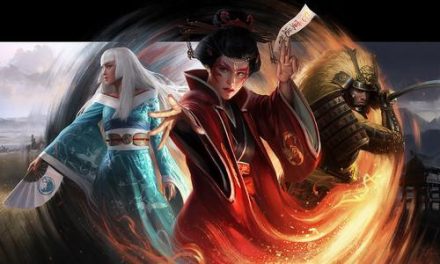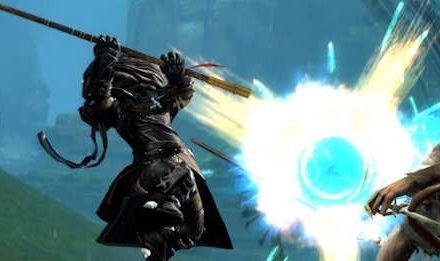In my experience, one of the most important bedrocks of a successful gaming campaign – whatever the setting or rules-system – is to have consensus between the players and the Game Master (GM) as what type of game is being played, what kind of story is being told.
A Focus on Story
Whenever I run a Shadowrun chronicle, I ask the players if they want to lean more to the “mirror shades”-style game (stealth, intrigue, quiet missions) or “pink mohawk” (explosions, explosions, explosions). This helps me make sure 1) that everyone around the table is on the same page, and 2) that I can tailor the experience to what the players want out of the adventures.
The same can be said if the game is Vampire: the Masquerade, Legend of the Five Rings, or even Dungeons and Dragons; do the players want a political game, a supernatural game, a mystery detective story, a beat-em-up brawl? Going into a campaign with a clear vision of the themes, genres, and plot-arcs everyone wants makes for a much better experience than everyone diving headlong with their own, non-collaborative ideas, where invariably some will clash and cause fiction, both in- and out-of-character.
A Focus on Cohesion
I have also found two ways of helping players come up with characters that will enhance or otherwise contribute in a large way to the overall success of a campaign, and I would highly encourage GMs looking to run cooperative campaigns to look at these options:
- Collaboration – the GM may suggest that the party needs to cover bases X, Y, and Z in order to be successful in the coming campaign, and leave the players to work out the specifics of who can do what, how each contributes, and how their stories interact. This method is very useful because it leads to natural cohesion between party members and each player feels like they have some ownership of the process.
- One-on-One Creation – sometimes a story or chronicle can benefit from a bit more drama, unexpected surprises, or hidden aspects to characters that aren’t known by the rest. In this format the GM works with each player specifically on the character they’d like to play, offering suggestions that revolve heavily around the central theme or conceit of the campaign. This method works for characters who may not know each other, or there are good reasons to keep specific abilities or drawbacks from the party.
In both instances, I find that the most important part of the process is the creation of real story. I could whip up a character that would fit mechanically into most settings and groups, but that would do little to endear me to either the players or the characters. For my games, much of the fun is in world-building, and encouraging the players to explore and develop not only their own stories but also to help shape the universe in which we play.
A Real-World Example
Recently I finished running a Legend of the Five Rings campaign, after a very successful six-year run. Before I sat down to start sketching out major plot points, overarching themes, or even in what time period the game would be set, I talked to the players, both individually and collectively, and we all decided that the chronicle would explore specific aspects of the foreign world, including heavy emphases on its spirituality, class-based friction, and Empire-wide politics.
As we sat down as a group to create characters, I encouraged everyone to think about what roles the party would need to have filled – in this campaign they would highly benefit from a leader, an offensive warrior, a defensive warrior, a courtier, and at least one magician. While they didn’t fill out those job titles exactly, they made sure to have at least each base nominally covered. Not only did this help ensure that I could throw a variety of situations at them with a reasonable chance of success, but also that they wouldn’t feel railroaded because they’d be at least passingly proficient at whatever circumstance they came across.
Individually I worked with each player on the specifics of their characters’ backstories, advantages, and disadvantages. In Legend of the Five Rings some omens and portents (whether positive or negative) may be known to the character but not come to fruition for some time, leading to feelings of dread or excited nervousness. Since each Clan handles or interprets the same signs differently, they would be wise to keep some aspects of their character and their story to themselves, only revealing it when the time came.
By utilizing the two techniques I presented above, leaning more heavily on the first than the second, each person was able to contribute to the intended arc of the story, and have their private motives and challenges which contributed to specific beats or moments within different chapters. I had two characters whose goals were to stamp out supernatural evil, and so it was an easy decision for me to have a supernatural force be the driving antagonist through the campaign. Two characters had passions for forbidden knowledge, so that was another tie-in to hidden occultism or private libraries.
All in all, by presenting the players with a very general overview of the kind of game I wanted to play (I’m not the biggest fan of epic battle scenes, or very talented at portraying complex court politics), and encouraging them to collaboratively come up with their characters, I was able to pin down the specific plot elements that would have the most impact for the stories the players wanted to tell, and the situations the characters could believably encounter. Had the cooperation between GM and players (and between players and players) not been present from the beginning, not only would it have been a much shorter-running game, but the story would have been short-changed from all sides, not reaching the fullness of depth and experience that the players were ultimately able to enjoy in its completion.
There are obviously many ways to create, run, and manage a gaming chronicle, and the above has just been my quick thoughts on what has proven effective for me and the people with whom I choose to play. I want to leave you with an adage I heard long ago, and experience has largely proven true:
Bad game is worse than no game.
Make sure to do everything you can to set up your campaign for success from the very outset, and everyone will have a much better time playing, leading, and telling stories, both as individuals and as a group.














